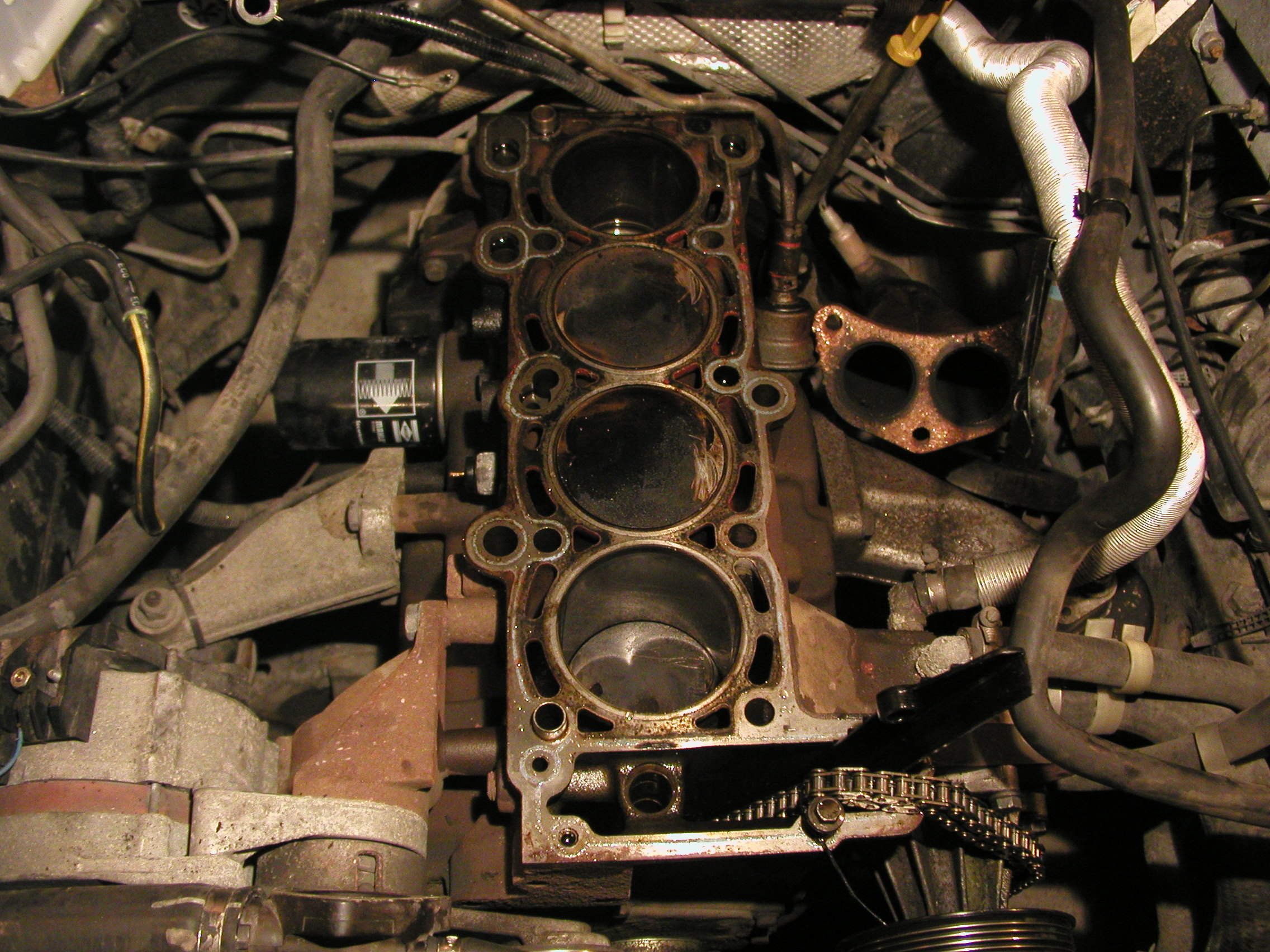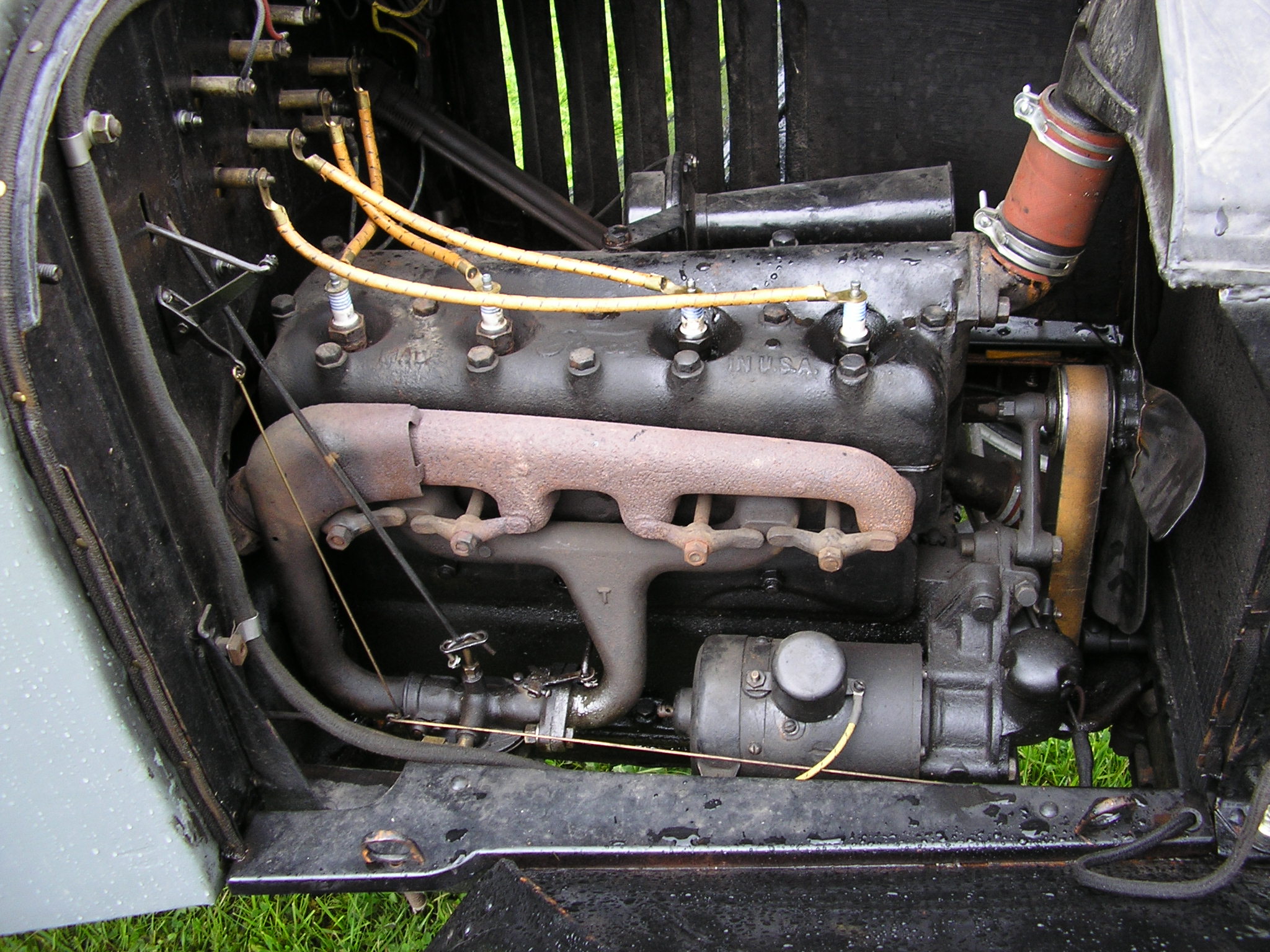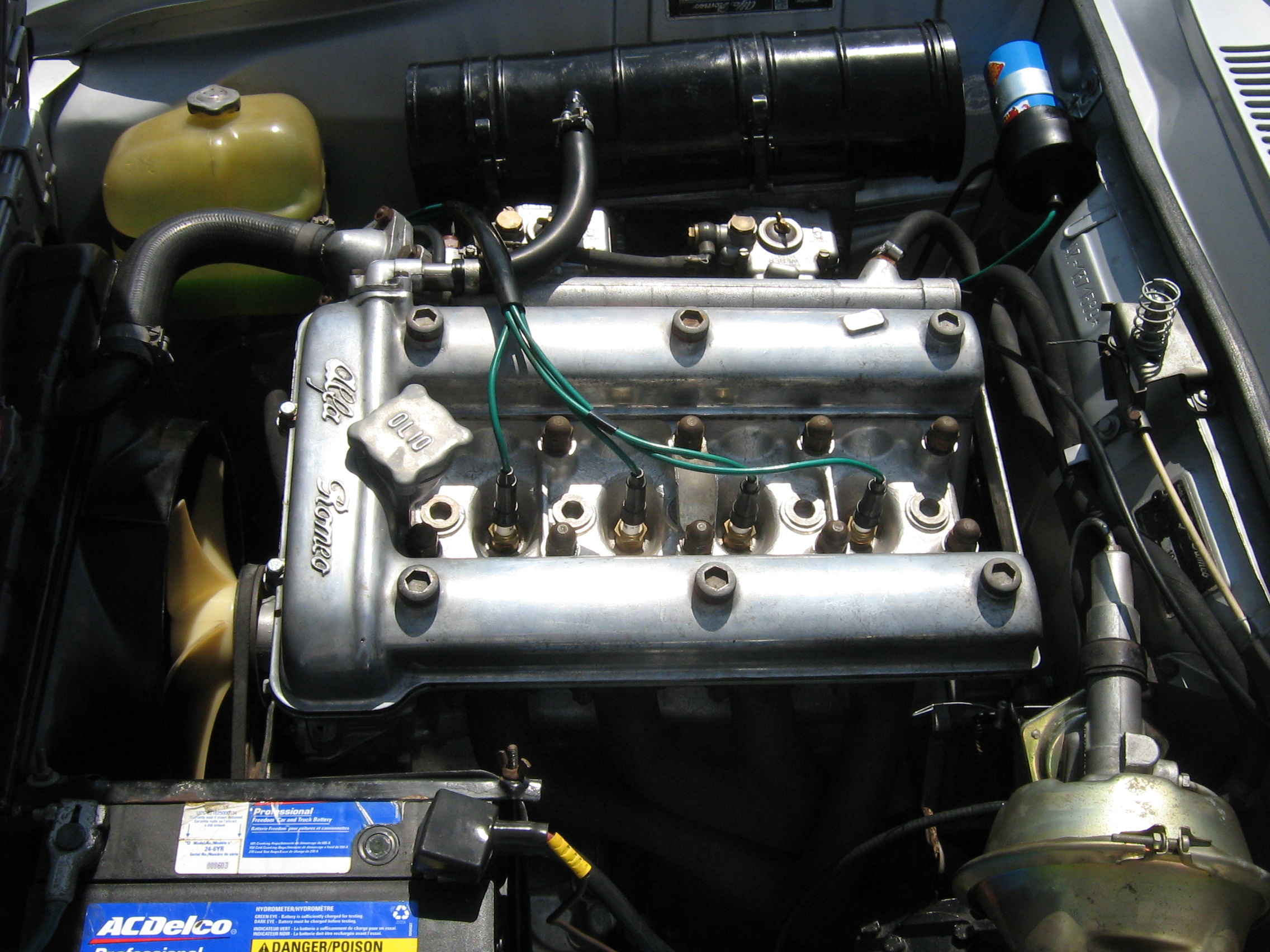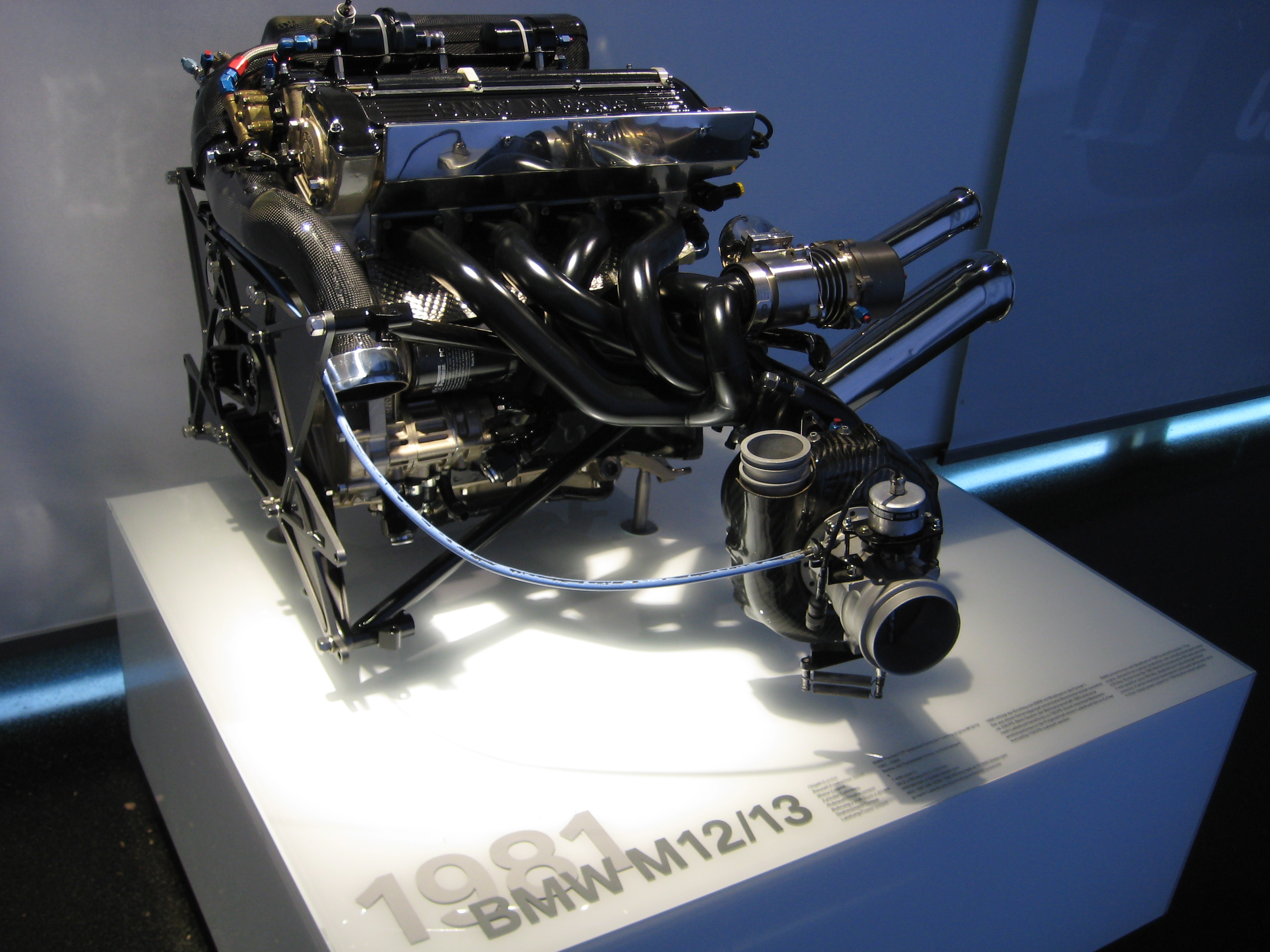Straight-four engine on:
[Wikipedia]
[Google]
[Amazon]


 A straight-four engine (also referred to as an inline-four engine) is a four-cylinder
A straight-four engine (also referred to as an inline-four engine) is a four-cylinder

 A
A

 Most modern straight-four engines used in cars have a displacement of . The smallest automotive straight-four engine was used in the 1963–1967 Honda T360 kei truck and has a displacement of , while the largest mass-produced straight-four car engine is the 1999–2019 Mitsubishi 4M41 diesel engine which was used in the Mitsubishi Pajero and has a displacement of .
Significant straight-four car engines include:
* 1954–1994 Alfa Romeo Twin Cam engine: one of the first mass-produced twin-cam engines. In 1990, it became the first production engine with
Most modern straight-four engines used in cars have a displacement of . The smallest automotive straight-four engine was used in the 1963–1967 Honda T360 kei truck and has a displacement of , while the largest mass-produced straight-four car engine is the 1999–2019 Mitsubishi 4M41 diesel engine which was used in the Mitsubishi Pajero and has a displacement of .
Significant straight-four car engines include:
* 1954–1994 Alfa Romeo Twin Cam engine: one of the first mass-produced twin-cam engines. In 1990, it became the first production engine with
 Many early racing cars used straight-four engines, however the Peugeot engine which won the 1913 Indianapolis 500 was a highly influential engine. Designed by Ernest Henry, this engine had double overhead camshafts (DOHC) with four valves per cylinder, a layout that would become the standard until today for racing inline-four engines.
Amongst the engines inspired by the Peugeot design was the Miller engine, which was a successful racing engine through the 1920s and early 1930s. The Miller engine evolved into the Offenhauser engine which had a highly successful spanning from 1933 until 1981, including five straight victories at the Indianapolis 500 from 1971 to 1976.
Many cars produced for the pre-WWII voiturette
Many early racing cars used straight-four engines, however the Peugeot engine which won the 1913 Indianapolis 500 was a highly influential engine. Designed by Ernest Henry, this engine had double overhead camshafts (DOHC) with four valves per cylinder, a layout that would become the standard until today for racing inline-four engines.
Amongst the engines inspired by the Peugeot design was the Miller engine, which was a successful racing engine through the 1920s and early 1930s. The Miller engine evolved into the Offenhauser engine which had a highly successful spanning from 1933 until 1981, including five straight victories at the Indianapolis 500 from 1971 to 1976.
Many cars produced for the pre-WWII voiturette
 Belgian arms manufacturer
Belgian arms manufacturer


piston engine
A reciprocating engine, more often known as a piston engine, is a heat engine that uses one or more Reciprocating motion, reciprocating pistons to convert high temperature and high pressure into a Circular motion, rotating motion. This article ...
where cylinders are arranged in a line along a common crankshaft.
The majority of automotive four-cylinder engines use a straight-four layout (with the exceptions of the flat-four engines produced by Subaru and Porsche) and the layout is also very common in motorcycles and other machinery. Therefore the term "four-cylinder engine" is usually synonymous with straight-four engines. When a straight-four engine is installed at an inclined angle (instead of with the cylinders oriented vertically), it is sometimes called a slant-four.
Between 2005 and 2008, the proportion of new vehicles sold in the United States with four-cylinder engines rose from 30% to 47%. By the 2020 model year, the share for light-duty vehicles had risen to 59%.
Design
A four-stroke straight-four engine always has a cylinder on its power stroke, unlike engines with fewer cylinders where there is no power stroke occurring at certain times. Compared with aV4 engine
A V4 engine is a four-cylinder piston engine where the cylinders share a common crankshaft and are arranged in a V engine, V configuration.
The V4 engine is less common compared to straight-four engines. However, V4 engines have been used in au ...
or a flat-four engine, a straight-four engine only has one cylinder head
In a piston engine, the cylinder head sits above the cylinders, forming the roof of the combustion chamber. In sidevalve engines the head is a simple plate of metal containing the spark plugs and possibly heat dissipation fins. In more modern ...
, which reduces complexity and production cost.
Displacement
Petrol straight-four engines used in modern production cars typically have a displacement of , but larger engines have been used in the past, for example the 1927–1931 Bentley 4½ Litre. Diesel engines have been produced in larger displacements, such as a 3.2 L turbocharged Mitsubishi engine (used the Pajero/Shogun/Montero SUV) and a 3.0 L Toyota engine. European and Asian trucks with agross vehicle weight rating
Vehicle weight is a measurement of wheeled motor vehicles; either an actual measured weight of the vehicle under defined conditions or a gross weight rating for its weight carrying capacity.
Curb or kerb weight
Curb weight (American English) or k ...
between 7.5 and 18 tonnes commonly use inline four-cylinder diesel engines with displacements around 5 litres. Larger displacements are found in locomotive, marine and stationary engines.
Displacement can also be very small, as found in kei car
Kei car is the smallest category of Japanese expressway-legal motor vehicles. The term ''kei'' is a shortening of , (kanji: ), which translates to English as "light vehicle" ().
With restricted dimensions and engine specifications, owners ...
s sold in Japan. Several of these engines had four cylinders at a time when regulations dictated a maximum displacement of 550 cc; the maximum size is currently at 660 cc.
Primary and secondary balance
Straight-four engines with the preferred crankshaft configuration have perfect primary balance. This is because the pistons are moving in pairs, and one pair of pistons is always moving up at the same time as the other pair is moving down. However, straight-four engines have a secondary imbalance. This is caused by the acceleration/deceleration of the pistons during the top half of the crankshaft rotation being greater than that of the pistons in the bottom half of the crankshaft rotation (because the connecting rods are not infinitely long). As a result, two pistons are always accelerating faster in one direction, while the other two are accelerating more slowly in the other direction, which leads to a secondary dynamic imbalance that causes an up-and-down vibration at twice crankshaft speed. This imbalance is common among all piston engines, but the effect is particularly strong on four-stroke inline-four because of the two pistons always moving together. The strength of this imbalance is determined by the reciprocating mass, the ratio of connecting rod length to stroke, and the peak piston velocity. Therefore, small displacement engines with light pistons show little effect, and racing engines use long connecting rods. However, the effect grows quadratically with engine speed (rpm).Pulsations in power delivery

Four-stroke engine
A four-stroke (also four-cycle) engine is an internal combustion (IC) engine in which the piston completes four separate strokes while turning the crankshaft. A stroke refers to the full travel of the piston along the cylinder, in either directi ...
s with five or more cylinders are able to have at least one cylinder performing its power stroke at any given point in time. However, four-cylinder engines have gaps in the power delivery, since each cylinder completes its power stroke before the next piston starts a new power stroke. This pulsating delivery of power results in more vibrations than engines with more than four cylinders.
Usage of balance shafts
 A
A balance shaft
Balance shafts are used in piston engines to reduce vibration by cancelling out unbalanced dynamic forces. The counter balance shafts have eccentric weights and rotate in the opposite direction to each other, which generates a net vertical force ...
system is sometimes used to reduce the vibrations created by a straight-four engine, most often in engines with larger displacements. The balance shaft system was invented in 1911 and consists of two shafts carrying identical eccentric weights that rotate in opposite directions at twice the crankshaft's speed. This system was patented by Mitsubishi Motors in the 1970s, introduced in the Mitsubishi Astron engine with the "Silent Shaft" name, and has since been used under licence by several other companies.
Not all large displacement straight-four engines have used balance shafts, however. Examples of relatively large engines without balance shafts include the 2.4 litre Citroën DS
The Citroën DS () is a Front-mid-engine, front-wheel-drive layout, front mid-engined, front-wheel drive executive car manufactured and marketed by Citroën from 1955 to 1975, in fastback/sedan, wagon/estate, and convertible body configurations ...
engine, the 2.6 litre Austin-Healey 100 engine, the 3.3 L Ford Model A (1927) engine and the 2.5 L GM Iron Duke engine. Soviet/Russian GAZ Volga and UAZ engines with displacements of up to 2.9 litres were produced without balance shafts from the 1950s to the 1990s, however these were relatively low-revving engines which reduces the need for a balance shaft system.
Usage in production cars

 Most modern straight-four engines used in cars have a displacement of . The smallest automotive straight-four engine was used in the 1963–1967 Honda T360 kei truck and has a displacement of , while the largest mass-produced straight-four car engine is the 1999–2019 Mitsubishi 4M41 diesel engine which was used in the Mitsubishi Pajero and has a displacement of .
Significant straight-four car engines include:
* 1954–1994 Alfa Romeo Twin Cam engine: one of the first mass-produced twin-cam engines. In 1990, it became the first production engine with
Most modern straight-four engines used in cars have a displacement of . The smallest automotive straight-four engine was used in the 1963–1967 Honda T360 kei truck and has a displacement of , while the largest mass-produced straight-four car engine is the 1999–2019 Mitsubishi 4M41 diesel engine which was used in the Mitsubishi Pajero and has a displacement of .
Significant straight-four car engines include:
* 1954–1994 Alfa Romeo Twin Cam engine: one of the first mass-produced twin-cam engines. In 1990, it became the first production engine with variable valve timing
Variable valve timing (VVT) is the process of altering the timing of a Poppet valve, valve lift event in an internal combustion engine, and is often used to improve performance, fuel economy or emissions. It is increasingly being used in combina ...
.
* 1908–1941 Ford Model T engine: one of the most widely produced engines in the world.
* 1951–2000 BMC A-Series engine
The Austin Motor Company A-series is a British small straight-4 car, automobile engine. Launched in 1951 with the Austin A30, production lasted until 2000 in the Mini. It used a cast-iron block and cylinder head, and a steel crankshaft with thre ...
: the first engine to be used in a mass-production transverse-engined front-wheel drive car.
* 1966–2000 Fiat Twin Cam engine
Fiat Automobiles S.p.A., commonly known as simply Fiat ( , ; ), is an Italian automobile manufacturer. It became a part of Fiat Chrysler Automobiles in 2014 and, in 2021, became a subsidiary of Stellantis through its Italian division, Stellant ...
: one of the first mass-produced twin-cam engines, produced from 1959.
* 1968–1981 Triumph Slant-4 engine: an early multi-valve
A multi-valve or multivalve Four-stroke engine, four-stroke internal combustion engine is one where each Cylinder (engine), cylinder has ''more than two'' poppet valve, valves – more than the minimum required of one of each, for the purposes of ...
engine which formed the basis of Saab's first turbocharged engines.
* 2000–2009 Honda F20C engine: produced the highest specific output for a naturally aspirated engine
A naturally aspirated engine, also known as a normally aspirated engine, and abbreviated to N/A or NA, is an internal combustion engine in which air intake depends solely on atmospheric pressure and does not have forced induction through a turboc ...
of its time.
Usage in racing cars
Grand Prix motor racing
Grand Prix motor racing, a form of motorsport competition, has its roots in organised automobile racing that began in France as early as 1894. It quickly evolved from simple road races from one town to the next, to endurance tests for car and ...
category used inline-four engine designs. 1.5 L supercharged
In an internal combustion engine, a supercharger compresses the intake gas, forcing more air into the engine in order to produce more power for a given displacement. It is a form of forced induction that is mechanically powered (usually by ...
engines found their way into cars such as the Maserati 4CL and various English Racing Automobiles (ERA) models. These were resurrected after the war, and formed the foundation of what was later to become Formula One
Formula One (F1) is the highest class of worldwide racing for open-wheel single-seater formula Auto racing, racing cars sanctioned by the Fédération Internationale de l'Automobile (FIA). The FIA Formula One World Championship has been one ...
, although the straight-eight supercharged Alfettas would dominate the early years of F1.
Another engine that played an important role in racing history is the straight-four Ferrari
Ferrari S.p.A. (; ) is an Italian luxury sports car manufacturer based in Maranello. Founded in 1939 by Enzo Ferrari (1898–1988), the company built Auto Avio Costruzioni 815, its first car in 1940, adopted its current name in 1945, and be ...
engine designed by Aurelio Lampredi
Aurelio Lampredi (16 June 1917 – 1 June 1989) was an Italian automobile and aircraft engine designer.
Early career
Lampredi was born in Livorno, Tuscany. He studied mechanical engineering at the Institut Technique Supérieur in Fribourg. A cl ...
. This engine was originally designed as a 2 L Formula 2
Formula Two (F2) is a type of open-wheel formula racing category first codified in 1948. It was replaced in 1985 by Formula 3000, but revived by the FIA from 2009 to 2012 in the form of the FIA Formula Two Championship. The name returned aga ...
engine for the Ferrari 500, but evolved to 2.5 L to compete in Formula One
Formula One (F1) is the highest class of worldwide racing for open-wheel single-seater formula Auto racing, racing cars sanctioned by the Fédération Internationale de l'Automobile (FIA). The FIA Formula One World Championship has been one ...
in the Ferrari 625. For sports car
A sports car is a type of automobile that is designed with an emphasis on dynamic performance, such as Automobile handling, handling, acceleration, top speed, the thrill of driving, and Auto racing, racing capability. Sports cars originated in ...
racing, capacity was increased up to 3.4 L for the Ferrari 860 Monza.
The Coventry Climax
Coventry Climax was a British manufacturer of forklift trucks, fire pumps, racing engines, and other speciality engines.
History
Pre WWI
The company was started in 1903 as Lee Stroyer, a joint venture by Jens Stroyer and Pelham Lee. In 1 ...
straight-four engine was also a very successful racing engine, which began life as a 1.5 litre Formula 2 engine. Enlarged to 2.0 litres for Formula One in 1958, it evolved into the large 2,495 cc FPF that won the Formula One championship in Cooper's chassis in 1959 and 1960.
In Formula One, the 1980s were dominated by the 1,500 cc turbocharged cars. The BMW M12/13 engine was notable for the era for its high boost pressures and performance. The cast iron block was based on a standard road car block and powered the F1 cars of Brabham, Arrows and Benetton and won the world championship in 1983. The 1986 version of the engine was said to produce about in qualifying trim, at 5.5 bar of turbo boost.
Usage in motorcycles
 Belgian arms manufacturer
Belgian arms manufacturer FN Herstal
, trading as FN Herstal and often referred to as Fabrique Nationale, or simply FN, is a leading firearms manufacturer based in Herstal, Belgium, and former vehicle manufacturer. It was the largest exporter of military small arms in Europe .
FN ...
, which had been making motorcycles
A motorcycle (motorbike, bike; uni (if one-wheeled); trike (if three-wheeled); quad (if four-wheeled)) is a lightweight private 1-to-2 passenger personal motor vehicle Steering, steered by a Motorcycle handlebar, handlebar from a saddle-style ...
since 1901, began producing the first motorcycles with inline-fours in 1905. The FN Four had its engine mounted upright with the crankshaft longitudinal. Other manufacturers that used this layout included Pierce, Henderson, Ace, Cleveland
Cleveland is a city in the U.S. state of Ohio and the county seat of Cuyahoga County. Located along the southern shore of Lake Erie, it is situated across the Canada–U.S. maritime border and approximately west of the Ohio-Pennsylvania st ...
, and Indian in the United States, Nimbus in Denmark, Windhoff in Germany, and Wilkinson in the United Kingdom.
The first across-the-frame 4-cylinder motorcycle was the 1939 racer Gilera 500 Rondine, it also had double-over-head camshafts, forced-inducting supercharger and was liquid-cooled. Modern inline-four motorcycle engines first became popular with Honda
commonly known as just Honda, is a Japanese multinational corporation, multinational Conglomerate (company), conglomerate automotive manufacturer headquartered in Minato, Tokyo, Japan.
Founded in October 1946 by Soichiro Honda, Honda has bee ...
's SOHC
An overhead camshaft (OHC) engine is a piston engine in which the camshaft is located in the cylinder head above the combustion chamber. This contrasts with earlier overhead valve engines (OHV), where the camshaft is located below the combus ...
CB750 introduced in 1969, and others followed in the 1970s. Since then, the inline-four has become one of the most common engine configurations in street bikes. Outside of the cruiser
A cruiser is a type of warship. Modern cruisers are generally the largest ships in a fleet after aircraft carriers and amphibious assault ships, and can usually perform several operational roles from search-and-destroy to ocean escort to sea ...
category, the inline-four is the most common configuration because of its relatively high performance-to-cost ratio. All major Japanese motorcycle manufacturers offer motorcycles with inline-four engines, as do MV Agusta
MV Agusta (, full name: MV AGUSTA Motor S.p.A., original name: Meccanica Verghera Agusta or MV) is an Italian high end motorcycle manufacturer. It was founded by Domenico Agusta, Count Domenico Agusta on 19 January 1945 as one of the branches of ...
and BMW
Bayerische Motoren Werke AG, trading as BMW Group (commonly abbreviated to BMW (), sometimes anglicised as Bavarian Motor Works), is a German multinational manufacturer of vehicles and motorcycles headquartered in Munich, Bavaria, Germany. Th ...
. BMW's earlier inline-four motorcycles were mounted horizontally along the frame, but all current four-cylinder BMW motorcycles have transverse engine
A transverse engine is an engine mounted in a vehicle so that the engine's crankshaft axis is perpendicular to the direction of travel. Many modern front-wheel drive vehicles use this arrangement. Most rear-wheel drive vehicles use a longitudinal ...
s. The modern Triumph company has offered inline-four-powered motorcycles, though they were discontinued in favour of triples.
The 2009 Yamaha R1 has an inline-four engine that does not fire at even intervals of 180°. Instead, it uses a crossplane crankshaft that prevents the pistons from simultaneously reaching top dead centre. This results in better secondary balance, which is particularly beneficial in the higher rpm range, and " big-bang firing order" theory says the irregular delivery of torque to the rear tire makes sliding in the corners at racing speeds easier to control.
Inline-four engines are also used in MotoGP
Grand Prix motorcycle racing is the highest class of motorcycle road racing events held on Road racing, road circuits sanctioned by the Fédération Internationale de Motocyclisme (FIM). Independent motorcycle racing events have been held sin ...
by the Suzuki
is a Japanese multinational mobility manufacturer headquartered in Hamamatsu, Shizuoka Prefecture, Shizuoka. It manufactures automobiles, motorcycles, all-terrain vehicles (ATVs), outboard motor, outboard marine engines, wheelchairs and a va ...
(since 2015
2015 was designated by the United Nations as:
* International Year of Light
* International Year of Soil __TOC__
Events
January
* January 1 – Lithuania officially adopts the euro as its currency, replacing the litas, and becomes ...
) and Yamaha (since 2002
The effects of the September 11 attacks of the previous year had a significant impact on the affairs of 2002. The war on terror was a major political focus. Without settled international law, several nations engaged in anti-terror operation ...
) teams. In 2010
The year saw a multitude of natural and environmental disasters such as the 2010 Haiti earthquake, the Deepwater Horizon oil spill, and the 2010 Chile earthquake. The 2009 swine flu pandemic, swine flu pandemic which began the previous year ...
, when the four-stroke Moto2 class was introduced, the engines for the class were a inline-four engine made by Honda
commonly known as just Honda, is a Japanese multinational corporation, multinational Conglomerate (company), conglomerate automotive manufacturer headquartered in Minato, Tokyo, Japan.
Founded in October 1946 by Soichiro Honda, Honda has bee ...
based on the CBR600RR with a maximum power output of . Starting in 2019
This was the year in which the first known human case of COVID-19 was documented, preceding COVID-19 pandemic, the pandemic which was declared by the World Health Organization the following year.
Up to that point, 2019 had been described as ...
, the engines were replaced by a Triumph triple engine.
Usage in light and medium duty commercial vehicles
Inline-four engines are also used in light duty commercial vehicles such as Karsan Jest andMercedes-Benz Sprinter
The Mercedes-Benz Sprinter is a light commercial vehicle (van) built by Mercedes-Benz Group AG of Stuttgart, Germany as a large van, chassis cab, minibus, and pickup truck. In the past, the Sprinter had been sold under the Mercedes-Benz, Dodge, ...
.
See also
* Flat-four engine *V4 engine
A V4 engine is a four-cylinder piston engine where the cylinders share a common crankshaft and are arranged in a V engine, V configuration.
The V4 engine is less common compared to straight-four engines. However, V4 engines have been used in au ...
References
External links
* {{DEFAULTSORT:Straight-Four Engine 4